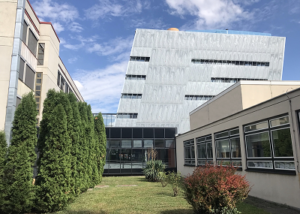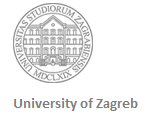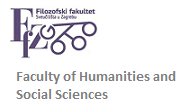Home » 8. semestar – SMJER PREVODITELJSTVO
Category Archives: 8. semestar – SMJER PREVODITELJSTVO
Sociolinguistics (P)
Course title: Sociolinguistics Course coordinator: Dr. Anđel Starčević, Assistant Professor Instructor: Dr. Anđel Starčević, Assistant Professor ECTS credits: 5 Language: English Semester: II (summer) Status: mandatory for translation students Form of instruction: 2 lectures + 1 seminar per week Examination: written Course description: The course conceptualizes language as a process and a frame for various […]
Localisation
Module title: Localisation Module coordinator: Dr Kristijan Nikolić, senior lecturer Instructor: Dr Kristijan Nikolić, senior lecturer ECTS credits : 5 Language of instruction: English Semester: 2nd or 4th (summer) Form of instruction: 1h lecture + 2 h seminar Examination: final paper Status: optional Objectives: The purpose of this module is giving an insight into the […]
Post-editing and machine translation quality assessment
Syllabus Course title: Post-editing and machine translation quality assessment Course coordinator: Professor Nataša Pavlović Instructor: Professor Nataša Pavlović ECTS credits: 4 Language: English and Croatian Semester: summer (2nd or 4th) Status: Elective Form of instruction: 2 contact hours of seminar + e-learning Examination: written, continuous assessment OBJECTIVES: By the end of the course the students should be able to post-edit […]
Translation and Power
Course title: Translation and Power Course coordinator: Ellen Elias-Bursać Instructor: Ellen Elias-Bursać ECTS credits: 4 Language: English Duration: 1 semester (summer) Status: elective Form of instruction: two contact hours of seminar Enrollment requirements: Students must be enrolled in the 2nd or higher semester of one of the following graduate study programs: English Language and Literature – Translation Track, Comparative Linguistics, Croatian Language and […]
Croatian Literature in Translation
Course title: Croatian Literature in Translation Course coordinator: Dr. Ellen Elias-Bursać Instructor: Dr. Ellen Elias-Bursać ECTS credits: 4 Language: English and Croatian Duration: 1 semester (summer) Status: elective Form of instruction: two contact hours of seminar Enrollment requirements: Students must be enrolled in the 2nd or higher semester of one of the following graduate study programs: English Language and Literature – […]
Sociolinguistics (P) (archive)
Course title: Sociolinguistics Course coordinator: Dr. Anđel Starčević, Assistant Professor Instructor: Dr. Anđel Starčević, Assistant Professor ECTS credits : 5 Language: English Semester: II (summer) Status: elective Form of instruction: 2 lectures + 1 seminar per week Examination: written Syllabus Week-by-week schedule Week / Topic 1. Sociolinguistics as a branch of linguistics. The fiction of […]
Political and Legal Institutions in Croatia and English Speaking Countries
Course title: Political and Legal Institutions in Croatia and English Speaking Countries Instructor: Dr. Snježana Veselica Majhut ECTS credits: 5 Status: mandatory for students enrolled in the translation track of the graduate program in English as a single major; elective for students enrolled in the translation track of the graduate program in English in combination […]
EU and International Organizations
SYLLABUS Course title: EU and International Organizations Instructor: Dr. Nataša Pavlović ECTS: 5 Status: Mandatory for students enrolled in the translation track of the graduate program in English as a single major; elective for students enrolled in the translation track of the graduate program in English in combination with another major Semester: 2nd Enrollment requirements: […]



